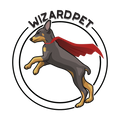DOG PSYCHOLOGY: Common mistakes | Part 1
The dog is endowed with certain natural qualities and in its environment is guided by instincts and reflexes or acquired experience. Instinct is a natural property of any living creature, the manifestation of instincts in dogs is one of the breed characteristics. One or another instinct in a dog can be more or less pronounced, depending on the degree of its contact with a person and distance from living wildlife. Reflexes are the ability to respond to environmental influences that are vital for the body. With the help of instincts and reflexes, a dog, like any living creature, lives in its environment and takes its strictly defined place in it. On the other hand, an unusually bright ability to accumulate experience allowed the dog to adapt to life next to a person and become not only his friend, but also an irreplaceable assistant in various life situations.

1. Many owners sometimes think that their dog simply does not know how to bite, whatever you do with him. This is a very common misconception.
Any dog can bite. For various reasons: from fear, from pain, cornered, protecting the puppies or the owner, I did not like the person. As you can see, there are a lot of reasons. A dog, unlike a man, is always armed. Do not underestimate this fact. And you need to treat dogs (even the cutest and smallest ones) with due respect.
The fact that the dog does not bite the owner or his child does not mean that it will tolerate such an attitude from a stranger. Remember, your son is a member of the pack (from a dog's point of view). If a dog does not bite, it means that he respects him and knows his place. With young dogs (who have not yet been explained that their place in the pack is tenth) and young children (who cannot show their authority without the help of adults), there are problems when a child says to the dog: "Let me pass," and the dog replies: "Who are you here? "
2. Very often, for fear of infection or aggression, dog owners limit the communication of their pets with other dogs in the yard. This is mistake.
The fact that a dog is by nature a pack animal is known to everyone, as well as the fact that a human family can replace a natural pack of a puppy. However, “can replace” does not at all mean that it replaces completely, filling all the biological needs of the dog by one hundred percent. That is why a huge mistake is made by those owners who seek to protect a growing dog from communicating with its fellow tribesmen, believing that the puppy only needs contacts with the owner himself and his relatives. They motivate the limitation of contact with other dogs and other considerations: the fear of infecting the puppy or the fact that large dogs can cripple the baby. The last arguments are not consistent at all. To prevent the puppy from getting sick, it is necessary to vaccinate in a timely manner, and not drag him away from all the dogs he meets. After all, infection occurs not only through direct contact, pathogens are found both on the soil and in water, remain on objects, clothes. Fears that other dogs will harm the puppy are also excessive. Adult dogs play with the puppy very carefully or simply avoid communication. Occasionally there are bitches giving birth, showing aggression towards other people's puppies, but their owners, knowing this behavior, as a rule, do not let their dogs near the young in order to avoid trouble.
So what needs of a growing dog cannot be satisfied by communication with the owner, but the society of other dogs fully provides? The need for a species-specific social climate. The dog has a very complex social behavior, including a whole system of smell, tactile and visual communication. It is possible to master this "language" in full only by communicating with relatives, and not with a person. A puppy growing up in isolation from other dogs has an extremely poor repertoire of demonstrations and sound signals; it does not perceive well the facial expressions and signal postures of other dogs. Such a misunderstanding of the intentions of relatives gives rise to fear and often its downside - a passive-defensive reaction.
3. Many owners are ashamed of the manifestations of sexual activity in their young pets. A teenage dog is severely punished for every attempt to mount other dogs during play. This is mistake.
Shedding, imitation of sexual intercourse, are completely normal elements of developing sexual behavior. They are inherent in the games of growing males, and they are found in the struggle of males with each other (nightmare, homosexuality!), And in the fuss of a young dog and a bitch (what promiscuity!). Please do not transfer human understanding of morality and ethics to dog relationships. If the youngster's harassment is too annoying, other dogs will be able to effectively reason with him without creating a reflex of inhibition of sexual activity. But it is this reflex that is developed by the owners who punish the dog for sexual play.
4. Many people, if they see a yawning dog, believe that the animal either did not get enough sleep or is bored. It is not always so.
Upon learning that something interesting is expected, the dog often begins to yawn violently, at the same time it can make very peculiar sounds. A monosyllabic sound is emitted almost at the maximum height; more complex sounds, starting high, then falling. In addition, this is expressed in different ways in different individuals. Obviously, this yawning should be considered typical biased behavior. Yawning can be seen as preparation for a physically demanding situation. It is always accompanied by a deep breath that improves functional readiness.

